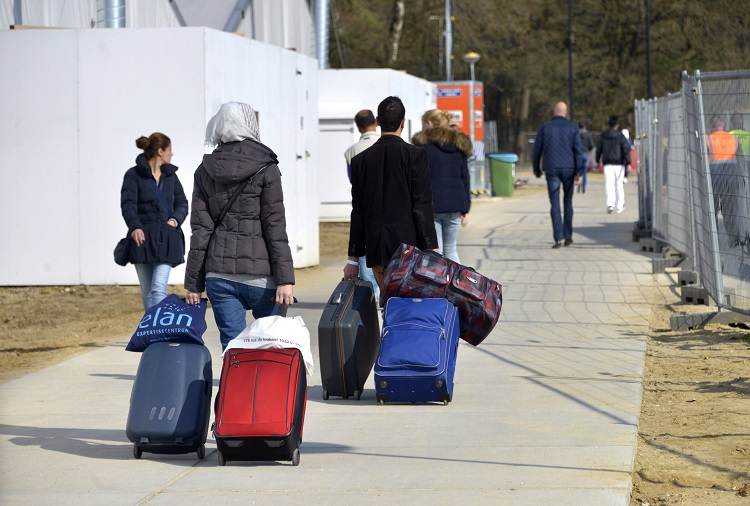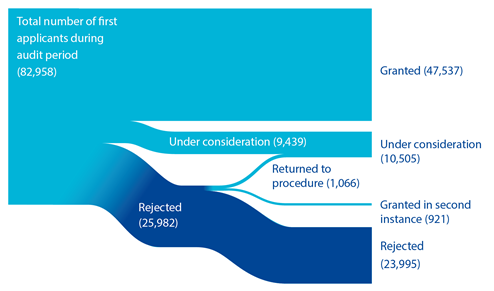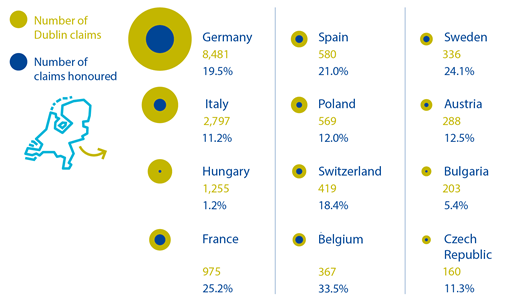Refugee crisis: Netherlands Court of Audit analyses the facts and figures
An audit of the refugee crisis by the Netherlands Court of Audit has shown that the Dublin agreements are not being respected. Under the terms of the EU’s Dublin Regulation, the Dutch government is entitled to return asylum seekers to the EU member state where they were first registered. The Court’s audit shows that just 14.8% of ‘Dublin claims’ result in such transfers being made in practice. The number of asylum seekers that other EU member states are prepared to accept from the Netherlands, is lower than the number of requests made by the Dutch government.

The 2015 refugee crisis prompted the Netherlands Court of Audit to examine the facts and figures surrounding the influx of asylum seekers around this time. After a period with a fairly moderate intake of asylum seekers, the Netherlands saw a sharp rise in the number of asylum seekers in 2015. The Netherlands Court of Audit found that the asylum and immigration authorities displayed resilience in coping with the massive influx of asylum seekers. Although the average duration of asylum procedures rose as the inflow peaked, it quickly declined again once the surge was over.
During the period of the refugee crisis, the Dutch government granted around 60% of the asylum applications made in the Netherlands. The two largest groups of asylum seekers were Syrians and Eritreans. In the wake of the massive inflow of refugees from these countries, large numbers of asylum seekers also arrived in the Netherlands from safe countries such as Morocco and Algeria. The vast majority of these applications (98.4%) were rejected.
Approximately 60% of asylum applications granted (2014 - 216)

European agreements on return of asylum seekers not respected
We found that a growing number of asylum seekers applying for asylum in the Netherlands had already registered in another EU country. In these cases, the Dutch government is entitled to invoke the Dublin agreements and return them to the country where they were first registered. On average, a quarter of all asylum seekers arriving in the Netherlands between 2014 and 2016 were subject to a ‘Dublin procedure’. By the end of 2016, this figure had risen to just over half of all asylum seekers.
The audit by the Netherlands Court of Audit showed that lower numbers of asylum seekers were actually transferred from the Netherlands to other EU member states (i.e. the number of Dublin claims honoured was lower) than has been assumed to date. Out of the total of 19,979 claims made by the Netherlands vis-à-vis other EU member states between 2014 and 2016, just 2,953 (14.8%) had been honoured by the end of 2016. There were wide differences between individual member states in terms of the numbers of asylum seekers accepted from the Netherlands.
Wide differences between European Countries in terms of honouring of Dublin claims

Out of all EU countries, Hungary accepted the lowest number of returning asylum seekers in percentage terms, i.e. 1.2%. This is due in part to a difference of opinion between the Dutch and Hungarian governments about asylum seekers entering the EU through Greece, whom the Hungarian government believed should be sent back to Greece. There were also doubts about reception centres for asylum seekers, living conditions and asylum procedures in Hungary, which is why the Dutch government has suspended transfers of asylum seekers to Hungary.
Many asylum seekers cannot be proved to have left the country
Failed asylum seekers are obliged to leave the Netherlands. The Court of Audit’s analysis showed that from 46.5% of failed asylum seekers cannot be proved to have left the country on the reference date of the audit.

The percentage of failed asylum seekers who are known to have left the country is particularly low in the case of asylum seekers from North Africa. Just 18% of failed asylum seekers from both Morocco and Algeria are known to have left the country. This is the lowest percentage for all nationalities and means that the government does not know where the remaining 82% of these asylum seekers now are.
The governments of Morocco and Algeria have proved highly uncooperative in assisting with the forced repatriation of their citizens. The Dutch government is trying the improve its track record with regard to the repatriation of undesirable aliens to these two countries, but without much success to date. Many of the Moroccans and Algerians who are known to have left the Netherlands have gone to other EU countries.